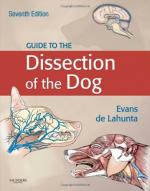|
This section contains 1,563 words (approx. 6 pages at 300 words per page) |

|
Overview
According to many sources, human dissection was not allowed by the church, so any dissection performed was primarily on animals. Despite the informative works from authors such as Aristotle (384-322 B.C.), Historia Animalium, and Galen (A.D.130-200), On Anatomical Procedure, their experience was primarily with pigs, dogs, and Barbary apes. Two early practitioners that did use humans in their works are Herophilus of Chalcedon (335-280 B.C.) and Erasistratus (fl. c. 250 B.C.). Herophilus wrote On Anatomy where he described parts of the brain, the uterus, arteries, and veins. The only extant proof that he dissected a human is in his description of the liver. Erasistratus was another early dissector who was accused by two religious writers as having performed dissection procedures on the living, not the dead. Altogether, few accurate images of the interior...
|
This section contains 1,563 words (approx. 6 pages at 300 words per page) |

|


